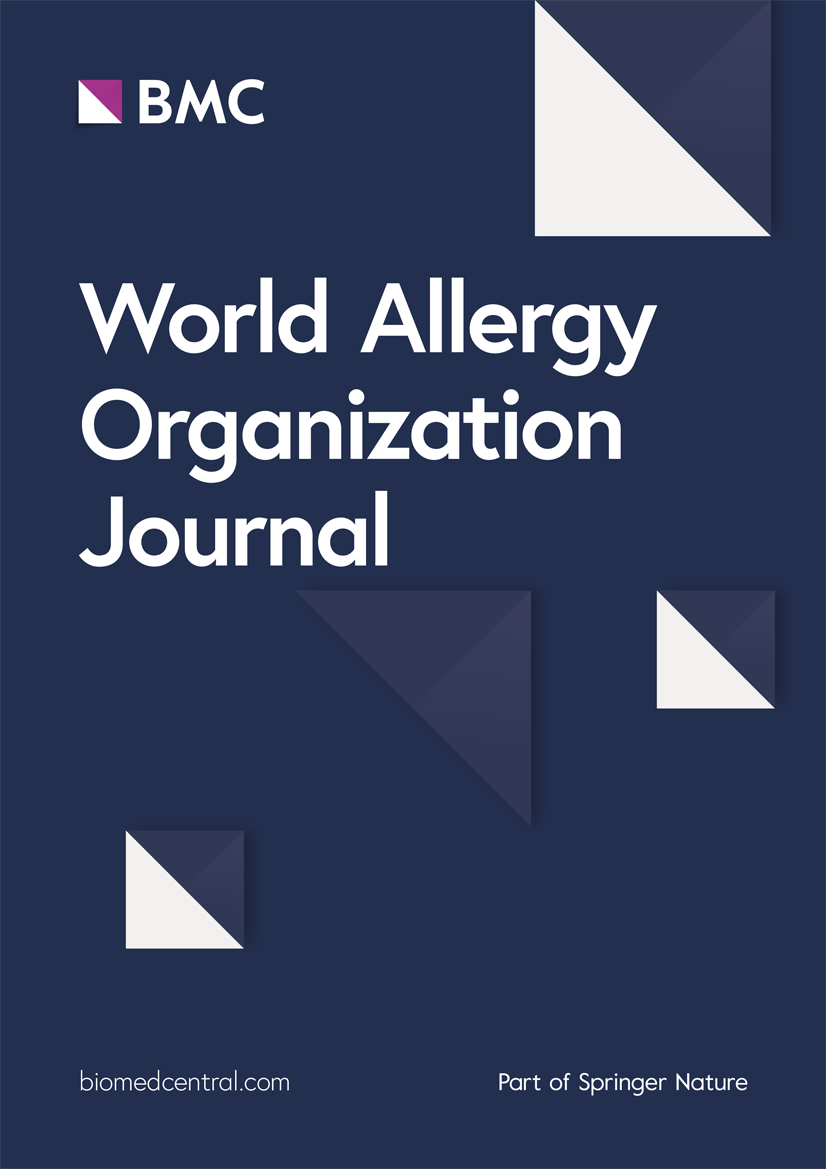Identification of immune-associated biomarkers in diagnosing allergic rhinitis
IF 4.3
2区 医学
Q2 ALLERGY
引用次数: 0
Abstract
Background
Allergic rhinitis (AR), as a prevailing disease worldwide, is a common chronic inflammatory disease of the upper airway; however, its prognosis did not meet expectations of the general public. Regarding the importance of treatment for AR, biomarkers with high sensitivity and precision are in urgent need.
Methods
To detect the potential mechanisms associated with the AR pathology, the differentially expressed gene data from the clinical dataset GSE19187 and GSE46171 were used for weighted gene co-expression network analysis. Additionally, 5 machine-learning algorithms were integrated to screen for novel diagnostic biomarkers for AR.
Results
This analysis identified 133 genes enriched in the black and purple module pathways from weighted gene co-expression network analysis (WGCNA). The 4 key diagnostic genes—CST1, CST2, SERPINB4, and TOX—were identified through machine learning algorithms and validated for their diagnostic potential with high area under the curve (AUC) values in external datasets. Immune infiltration analysis indicated a higher proportion of resting mast cells in AR samples compared to controls, with CST1, CST2, and SERPINB4 showing high expression in these cells. Real-time PCR validation confirmed that CST1, CST2, and SERPINB4 were upregulated in AR samples while TOX was downregulated.
Conclusion
Our study identifies critical molecular markers and immune cell alterations associated with AR, providing insights into its pathogenesis and potential diagnostic biomarkers for clinical application. Future research should focus on validating these findings in larger cohorts to facilitate the development of targeted therapies for AR.
免疫相关生物标志物在变应性鼻炎诊断中的鉴定
背景变应性鼻炎(allergic rhinitis, AR)是一种常见的上呼吸道慢性炎症性疾病,是一种世界性的常见病;然而,其预后并没有达到公众的预期。对于AR治疗的重要性,迫切需要高灵敏度和高精度的生物标志物。方法利用临床数据集GSE19187和GSE46171的差异表达基因数据进行加权基因共表达网络分析,检测与AR病理相关的潜在机制。此外,我们还整合了5种机器学习算法来筛选新的ar诊断生物标志物。结果该分析从加权基因共表达网络分析(WGCNA)中鉴定出133个富集于黑色和紫色模块通路的基因。通过机器学习算法鉴定出4个关键诊断基因——cst1、CST2、SERPINB4和xox,并在外部数据集中以高曲线下面积(AUC)值验证了它们的诊断潜力。免疫浸润分析显示,与对照组相比,AR样本中静止肥大细胞的比例更高,CST1、CST2和SERPINB4在这些细胞中高表达。Real-time PCR验证证实,CST1、CST2和SERPINB4在AR样品中上调,而TOX下调。结论本研究确定了与AR相关的关键分子标记和免疫细胞改变,为其发病机制和临床应用的潜在诊断生物标志物提供了见解。未来的研究应侧重于在更大的队列中验证这些发现,以促进AR靶向治疗的发展。
本文章由计算机程序翻译,如有差异,请以英文原文为准。
求助全文
约1分钟内获得全文
求助全文
来源期刊

World Allergy Organization Journal
Immunology and Microbiology-Immunology
CiteScore
9.10
自引率
5.90%
发文量
91
审稿时长
9 weeks
期刊介绍:
The official pubication of the World Allergy Organization, the World Allergy Organization Journal (WAOjournal) publishes original mechanistic, translational, and clinical research on the topics of allergy, asthma, anaphylaxis, and clincial immunology, as well as reviews, guidelines, and position papers that contribute to the improvement of patient care. WAOjournal publishes research on the growth of allergy prevalence within the scope of single countries, country comparisons, and practical global issues and regulations, or threats to the allergy specialty. The Journal invites the submissions of all authors interested in publishing on current global problems in allergy, asthma, anaphylaxis, and immunology. Of particular interest are the immunological consequences of climate change and the subsequent systematic transformations in food habits and their consequences for the allergy/immunology discipline.
 求助内容:
求助内容: 应助结果提醒方式:
应助结果提醒方式:


